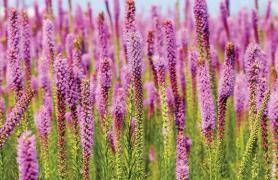
What’s red, white, and blue, and flutters over backyards and city parks every summer? It’s Missouri’s most patriotic bird: the eastern bluebird.
Colorful Courtship
Buddy the bluebird is showing off again. He flies to the roof of a birdhouse, flutters his cobalt wings, and waves around a beakful of dead grass.
His girlfriend, Bessie, seems unimpressed.
Unfazed, Buddy tries another tactic. He carries the nesting supplies into and out of the birdhouse, over and over again. “What do you think?” he seems to be asking. “Wouldn’t this be a perfect home?”
From her perch in a nearby tree, Bessie ponders his proposal. She swoops down to land beside Buddy, who’s back to waving his grass around. Eventually, she disappears inside the birdhouse, and he gets his answer.
Bessie will raise a family with him.
Home Tweet Home
In spring, summer, and fall, eastern bluebirds are seen across the Show-Me State in savannas, pastures, cemeteries, city parks, and backyards — anywhere with short grass and a few scattered trees.
Bluebirds nest in hollowed-out holes. Their beaks aren’t sturdy enough to hammer out openings of their own. So they have to reuse cavities created by woodpeckers or birdhouses built by people.
Other birds use these holes, too. All spring long, Buddy stays busy chasing away tree swallows, chickadees, and other bluebirds who want his home for their own. Get off my lawn!
Caterpillar Patrol
Perched on a low branch, Buddy watches the ground below. Swoooop! As soon as he spots movement, he dives down to pounce on a little green caterpillar crawling through the thick green grass. Like all bluebirds, Buddy has excellent eyesight and can spy a tiny insect from over 60 feet away.
It’s a good thing, too. Now that Bessie’s eggs have hatched, Buddy has four more mouths to feed. From sunup to sundown, he nabs caterpillars, crickets, beetles, and any other insect he can put his beak on. He eats a few himself — nom, nom, nom! — but most morsels get delivered to the nestbox to feed Bessie and the babies.
In a few days, once the chicks can be left alone for short stretches, Bessie will join Buddy in finding food for the hungry youngsters.
Life Outside the Box
A parent’s work is never done. Young bluebirds leave the nest when they’re about 18 days old — but that doesn’t mean they can survive on their own. Buddy and Bessie are now busier than ever.
When predators, like house cats and hawks, creep too close, the grown-ups snap their bills and give angry scolding calls to warn their kids. They teach the fledglings how to swoop and pounce on bugs. And, until the little birds master bug-catching, Buddy and Bessie have to keep stuffing food down their hungry little beaks. Especially B.B.’s — he’s always begging for more!
Teenage bluebirds don’t look like grown-ups. Instead of snazzy red and white bellies, their undersides are brown and speckled. The spots work like camouflage to help the youngsters hide from danger. Bluebirds, robins, and thrushes are closely related. One way you can tell is because their babies all have speckled bellies.
Menu Mix-Up
Later that summer, Buddy and Bessie raise a second batch of babies. Some bluebird couples even raise three broods in a year. Whew!
By fall, the kids have molted their drab teenage feathers and now sport the bedazzling blues, reds, and whites of grown-ups. As cold weather blows in, bluebirds begin to eat fewer insects and more berries, like sumac, dogwood, wild grapes, and even poison ivy.
Other changes are happening, too. During nesting season, Buddy and Bessie were grouchy neighbors. If another bird flew into their territory, they’d chatter angrily and chase it away. Now, the couple enjoys company. They join small, happy flocks of other bluebirds to scour the countryside for berries to eat.
Some bluebirds, especially those who live in northern Missouri, move south during winter. Buddy and Bessie stay put. On chilly days, they crowd into cavities with other bluebirds to huddle together for warmth.
Singing the Blues
Decades ago, eastern bluebird numbers took a nosedive. People used too many pesticides, which killed the insects that bluebirds liked to eat. Nest trees had been cut down to make room for new neighborhoods. And starlings and house sparrows, birds brought to the U.S. from Europe, had forced bluebirds out of the few natural cavities that remained.
Luckily, conservationists and nature lovers started building bluebird nestboxes. They put up thousands in backyards, city parks, and along fence rows across the eastern United States. Bluebirds seemed to like these new homes, and soon, their numbers began to rebound.
If you’d like to build a home for a bluebird family like Buddy and Bessie’s, grab a grown-up (to help with construction) and visit audubon.org/news/how-build-bluebird-nest-box.












Also In This Issue

Make this mini field guide to learn about summer wildflowers
And More...
This Issue's Staff
Photographer – Noppadol Paothong
Photographer – David Stonner
Designer – Marci Porter
Designer – Les Fortenberry
Art Director – Cliff White
Editor – Matt Seek
Subscriptions – Laura Scheuler
Magazine Manager – Stephanie Thurber






















